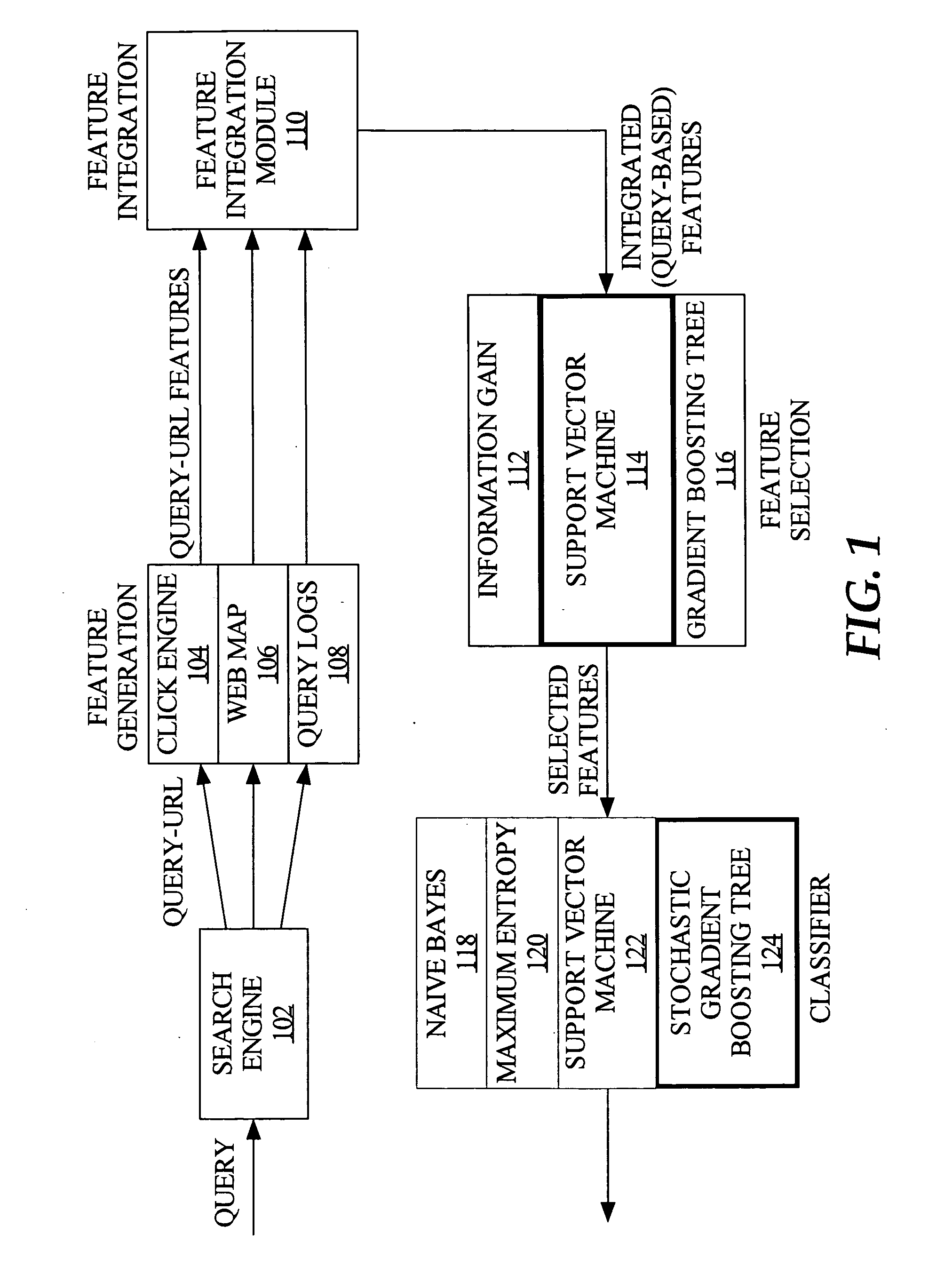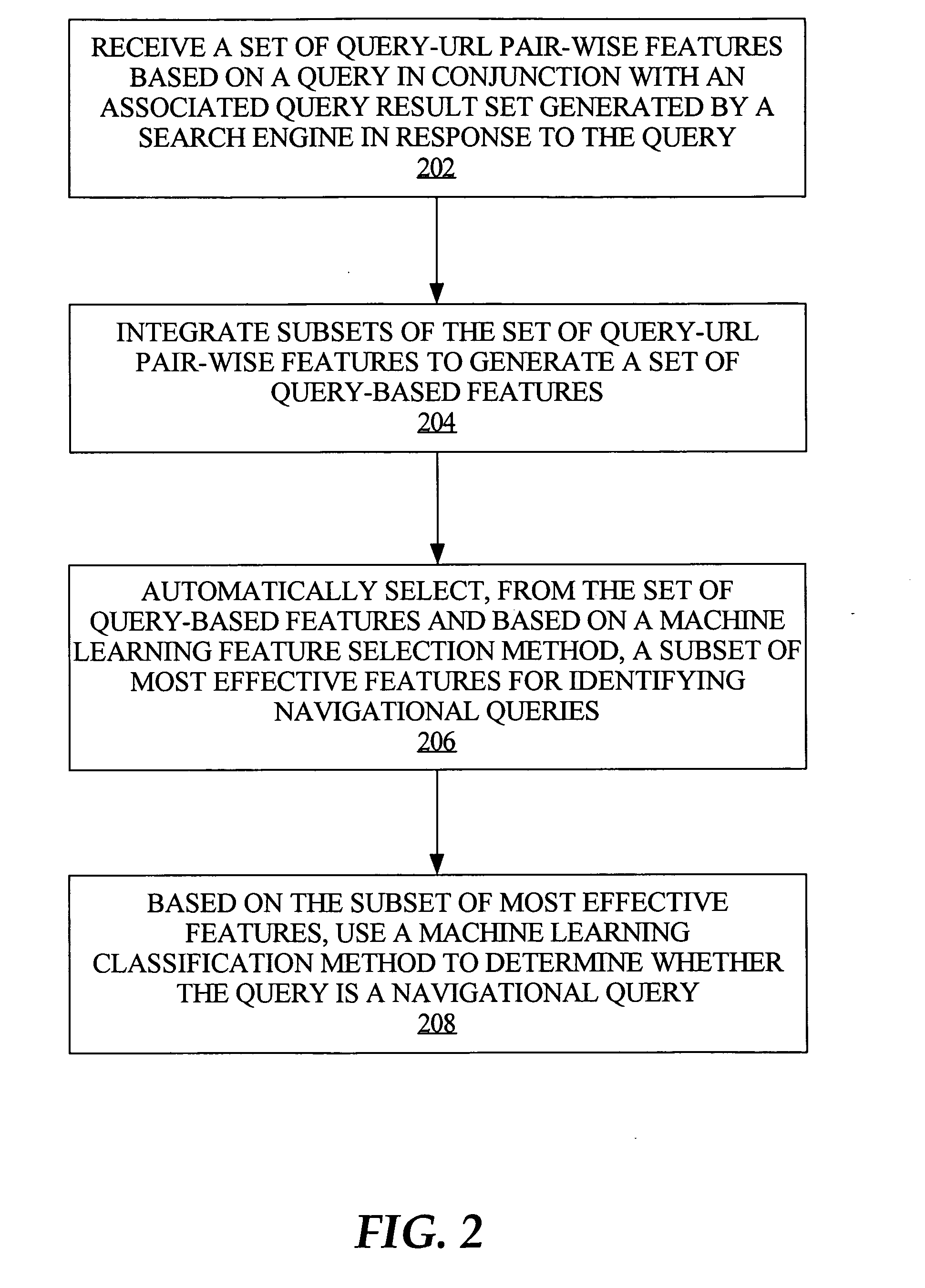Techniques for navigational query identification
a technology of query identification and navigation, applied in the field of information search technology, can solve the problems of large number of features producing incorrect or no, and difficult to identify navigational query
- Summary
- Abstract
- Description
- Claims
- Application Information
AI Technical Summary
Problems solved by technology
Method used
Image
Examples
Embodiment Construction
[0010]Techniques are described for identifying navigational queries associated with Web search. In the following description, for the purposes of explanation, numerous specific details are set forth in order to provide a thorough understanding of the present invention. It will be apparent, however, to one skilled in the art that the present invention may be practiced without these specific details. In other instances, well-known structures and devices are shown in block diagram form in order to avoid unnecessarily obscuring the present invention.
Function Overview of Embodiments
[0011]Identifying queries having different intents may dramatically improve search quality. For example, if a query is known to be navigational, search results can be improved via a special ranking function for navigational queries. Further, the presentation of the search results or the user-perceived relevance can also be improved by only showing the top results of the query and reserving the rest of the resu...
PUM
 Login to View More
Login to View More Abstract
Description
Claims
Application Information
 Login to View More
Login to View More - R&D
- Intellectual Property
- Life Sciences
- Materials
- Tech Scout
- Unparalleled Data Quality
- Higher Quality Content
- 60% Fewer Hallucinations
Browse by: Latest US Patents, China's latest patents, Technical Efficacy Thesaurus, Application Domain, Technology Topic, Popular Technical Reports.
© 2025 PatSnap. All rights reserved.Legal|Privacy policy|Modern Slavery Act Transparency Statement|Sitemap|About US| Contact US: help@patsnap.com



